Saddlebred Summit Advances
Thursday, February 22, 2007
by Christy Howard Parsons
(photos by Susan Harris)
LEXINGTON, Ky. - One of the major initiatives the American Saddlebred Horse Association undertook in 2006 was a membership survey, which truly amounted to a census, as every ASHA adult member was asked for their opinions. The purpose of the survey was to assess the current state of the breed and to aid the leadership in advancing the breed. Along with Dr. Steven Skinner and the University of Kentucky, ASHA formed focus groups to determine what questions to include on the survey.
In addition to overall questions asked of everyone, breeders, trainers, farriers, owners and veterinarians were asked to answer additional specific questions about their areas of knowledge.
While the full results of the survey have not been publicly released yet, the results have been studied by the Advancement Committee, and the challenges identified by the survey were discussed in an open forum with the membership.
The survey identified two chief issues as barriers to growth of the breed. Both affordability and judging were clearly issues to ASHA members according to the survey. It was also identified in the open comment portion of the survey that some people thought the industry was unwelcoming to new people or was considered elitist. While time ran short and members did not have much chance to respond to these issues in the open session on Saturday, Gayle Lampe did agree with the affordability issue and argued that having fewer small horse shows where affordable horses can compete was a key issue.
The survey also indicated that the perception of our judging was not as good as we would expect. Even isolating only actual judges’ opinions still indicated a perceived problem in the subjective judging process.
Scott Matton summed up these perceptions by saying that he had spent many years in the beginning of his career experiencing bad judging. “But I’ve found that the better my horses get and the better my riders get, the better the judging gets.”
Alan Balch suggested that perhaps ASHA should consider a peer review process that went a step beyond USEF’s Licensed Officials rules. “We could be a leader in the subjectively judged disciplines,” said Balch.
Art Zubrod encouraged ASHA members to be patient in making changes. “We do need entry level horses, entry level classes and entry level shows, but most of all we have to be supportive of these new people. I like some of the ideas we’ve heard, but it’s going to take a long time to make these changes, seven or eight years perhaps, before we start seeing a difference.”
Some of the changes Zubrod alluded to had been discussed in the earlier session on Friday.
At that session, Balch released the facts and figures of the ASHA. While the financial report was very good in that expenses have continued to be cut and profits in 2006 approached $200,000, in the end the ASHA is a small organization with net assets (net of prize programs and including the building at cost) of only $1.1 million. This is quite small in terms of an ability to launch a major marketing initiative.
Balch reviewed some of the costs for television, radio, newspaper and outdoor billboard advertising. For example, KEEP, a Kentucky equine program spent over $1 million in nine weeks in only one state in advertising. “We are not in a position to spend money like this on advertising,” explained Balch.
“But the most important assets we have to leverage are not our financial assets, but our 8,800 member nationwide sales force. If we could motivate our total database of people who love the American Saddlebred, even if they aren’t an ASHA member, and arm them with a consistent message and repeat that same message relentlessly, then we can turn this ship around,” said Balch.
“The web is absolutely the key, especially for the younger demographics we want to attract. This group understands network marketing, and we have to find a way to tap into this market,” furthered Balch.
Balch also released 2006 data, although he cautioned that many of the figures cannot accurately be compared to prior years as stallion reports and registrations continue to come in after the year is over. ASHA membership for 2006 was 8,627. This number has continued to rise even after the large increase in 2004 due to a rule change requiring exhibitors at the World’s Championship to be ASHA members.
Mares bred were 5,409 and stallion reporting were 921, but these numbers are certainly not final figures. However, it does appear these numbers are showing some decline, and “any decline is unacceptable,” according to Balch.
Registrations taken by year for any age horse were 2,860 in 2006, which shows a slight decline since 2001 when the number was 3,052, but these figures have been between 2,756 and 3,052 for the last seven years.
Transfers taken by year for any age horse are also down. In 2006 there were 4,826 transfers compared to 5,376 in 2002.
“Don’t take this to mean I don’t think we can do anything,” said Balch. “There are lots of things we can do.”
Kayce Bell, a member of the Advancement Committee, took that to heart and presented some ideas to the Advancement Committee on Thursday late afternoon. That evening and the next morning, she prepared a power point presentation to present these ideas to the membership.
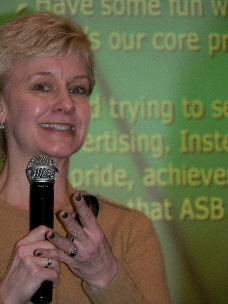
Kayce Bell
Bell talked about the importance of defining our target audience that she suggested was families with children and empty nesters, “persons whose years of Saddlebred participation and/or income acceleration are ahead of them.”
Bell’s enthusiasm for the American Saddlebred, her self-described “fanaticism,” was the basis of her idea. She suggested developing a trademarked tagline that would sell the excitement, beauty and fun of the American Saddlebred in 10-15-30 second digital video spots.
She proceeded to outline some of her script ideas for these digital video spots.
Open brainstorming for other marketing ideas followed Bell’s presentation. It was suggested that the American Saddlebred should be represented at every equine fair and event across the country, not just with a booth and information, but with live horse demonstrations wherever possible.
Alan Balch suggested that a donor was possibly interested in developing modern content for a RFD television series. Costs for this venture might be as much as $25,000 to $40,000, so a donor would be necessary. Balch also stressed the need for a consistent message across all the ASHA’s marketing efforts.
Janet Thompson suggested that the ASHA Web site could keep information on registered users.
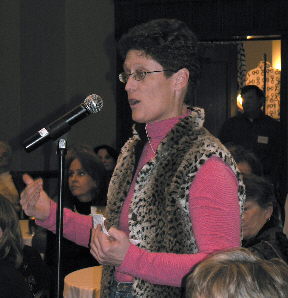
Janet Thompson
Kathie Dunn took it a step further to suggest names be gathered in one central repository from all the equine fairs and events as well in an effort to isolate people who would be willing to be Saddlebred ambassadors.
Balch asked everyone to assist ASHA in making sure that the ASHA Web site database be as complete as possible. Currently the ASHA Web site allows visitors to put in their zip code to find out the closest place they can go to see an actual Saddlebred. Unfortunately too many areas of the country have little or no Saddlebred representation according to this database. Any stables, lesson programs, fairs, etc., that have Saddlebred representation need to contact ASHA to be listed as part of the free program.
Smith Lilly suggested that ASHA go a step farther to correct the problem of a lack of penetration in some markets. “UPHA and ASHA need to work together to get more lesson programs started around the country.” He specifically suggested apprentice programs and scholarship programs to improve the distribution system that currently limits the growth of the American Saddlebred industry.
Lilly went on to suggest reaching out through Youth Programs, similar to the ‘Shadow a Trainer’ program which had previously been attempted. Lilly felt that materials, money and perhaps even tack could be donated to new lesson programs that were setting up in markets where Saddlebreds are not already represented.
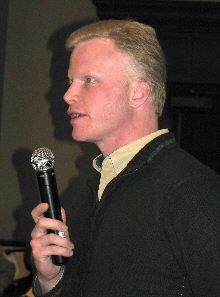
Smith Lilly
Chuck Herbert agreed. “All our marketing is moot if they have to drive to Kentucky to find a horse.”
Alan Balch also agreed. He said that market research had indicated an incredible opportunity for the American Saddlebred because the best opportunities for penetration were in large markets with large concentrations of wealth. Balch specifically mentioned California, Texas, New York and New Jersey.
Others participating in the roundtable discussion included:
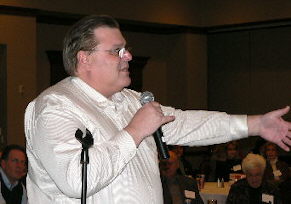 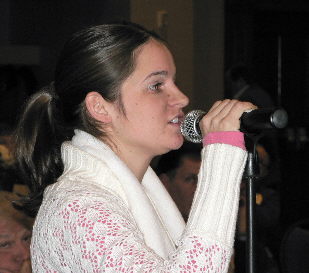
Walt Healey Nicole Wettstein
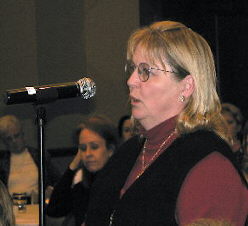 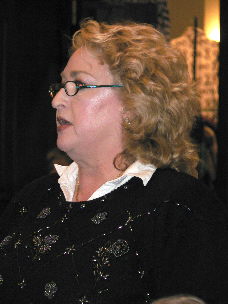
Kim Clements Sue Skipper
In addition to the membership survey, the ASHA also sent out the “short form” survey with the Annual Meeting Registration packet, which asked members to rate the ASHA staff and programs. The ASHA staff rated extremely high, with some room for improvement in timeliness. Programs did not rate as highly and there are opportunities for improving all of the prize programs.
Also a part of this survey was a series of questions regarding a qualification system at the World’s Championship Horse Show. Tandy Patrick announced that the Kentucky State Fair did plan to implement a new point-based qualification system for pleasure and/or park classes at the 2008 Kentucky State Fair. She indicated that complete details would be available by June 2007, as qualification would begin as soon as entries closed for the 2007 Kentucky State Fair. The committee to develop the qualification system will consist of Tandy Patrick, Scarlet Mattson, Alan Balch and Chuck Herbert.
When asked whether they were in favor of a qualifying system, the survey recipients indicated yes (66 percent), no (23 percent) or no opinion (11 percent). Breaking out the surveys to only include respondents who had owned a horse who competed at the WCHE in the last five years, there were fewer respondents with no opinion. Sixty-nine percent said they were in favor, 27 percent were not and only 4 percent had no opinion.
The question was also restated that aside from stabling capacity and scheduling concerns, one reason for the qualification system was to stimulate interest in local and regional competitions. If a system could be developed to accomplish these goals, 77 percent of respondents were in favor, 14 percent were no and 9 percent had no opinion. Again, breaking out only the respondents who had competed, 79 percent were in favor, 17 percent were not and 4 percent had no opinion.
John Lenore strongly agreed. “This is long overdue. I applaud this decision as it will help our smaller shows.”
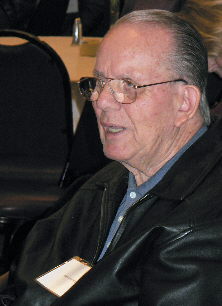
John Lenore
It was also suggested that in the meeting, if we are really trying to help the smaller shows, then this should extend to other divisions that are hurting at the smaller shows, and not merely extend to pleasure divisions.
Smith Lilly also supported the qualification idea but suggested, “This cannot be a marathon qualification system. We don’t need to wear our horses out before Louisville even gets here.”
Alan expressed his appreciation for the tremendous responses that had been given in the open comment area of the survey regarding how the qualification system be set up. He also reminded everyone that article 15.0.9 of the USEF rules did specify how qualification systems should be set up, although it does include the ubiquitous language “or other system as approved by the Federation.”
The ASHA also provided educational forums during the convention. Dr. Samantha Brooks of University of Kentucky’s Gluck Equine Research Center discussed equine gene mapping. She identified the current genetic tests available, mostly for disease and coat color. She also said that the Broad Institute at MIT had done research which provided access to more than one million new SNP markers, effectively allowing genetic mapping on much more complex genetic traits to be performed.
“Tell us what you want us to study,” she said. She did not identify lordosis in the list of genetic tests they are currently trying to develop.
Dr. Rob Foss of Columbia, Mo., also spoke regarding assisted fertilization techniques.
Jack Kelly and Tandy Patrick showcased a video of the 2006 FEI games and spoke in the open forum regarding the games coming to the Kentucky Horse Park in 2010. The 2006 games were televised to over 460 million people and very little of this was in the United States. NBC and Animal Planet have already committed to much more television coverage in 2010.
Alan Balch suggested that this was an opportunity to introduce 500,000 people in person to the American Saddlebred in two weeks.
Jay Hickey of the American Horse Council also addressed the open forum. He reminded everyone of the $100,000 horse deduction allowed on 2006 tax returns. He also talked about ongoing projects of the American Horse Council including Federal Disaster Relief for Horses, Immigration Reform and the Agricultural Jobs Bill, the Unwanted Horses Coalition and the “Own Responsibly” initiative and the National Animal Identification System.
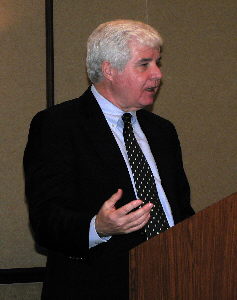
Jay Hickey
There was a lively discussion on Friday about the Evolution and Future of the American Saddlebred. Dr. Alan Raun, Bill Becker, John Scheidt, Joan Hamilton and Lewis Eckard led the discussion regarding the difference in genotype and phenotype, the ideal conformation of the Saddlebred, and then anecdotes from the panel and others including their successes and failures in breeding.
Both Friday and Saturday featured luncheons honoring ASHA members. On Friday and ASHA Year End Awards and National Pleasure Awards were presented. Olympic Games course designer Linda Allen was the keynote speaker. Allen had begun her equestrian career aboard Saddlebreds and she brought along photographic slides to prove it. She discussed the changes taking place in the equestrian world from breed loyalties to discipline loyalties. Specifically she discussed the increases in eventing, endurance, driving and dressage, while breed registrations are declining in most horse breeds. She also discussed the impact the amateur rider has had on the horse industry, as more and more owners want the joy of riding themselves, rather than merely owning a horse for a trainer to ride.
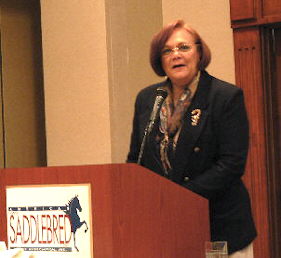
Linda Allen
Two charter clubs were honored at Friday’s luncheon – one small club and one large club. The Colorado Saddlebred Horse Association was named the small Charter Club of the Year with Stacey Kipper accepting. Linda Beltz represented the large Charter Club of the Year – Indiana Saddlebred Horse Association.
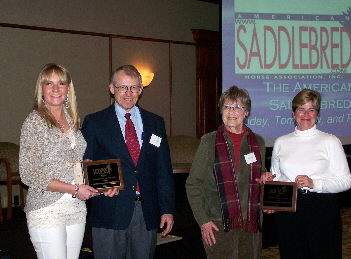
Stacey Kipper, Fred Sarver, Mae Condon, Linda Beltz
Saturday’s luncheon began with recognition of Dede Gatlin and Petra Green for their 20 years of service to the American Saddlebred Horse Association and Registry.
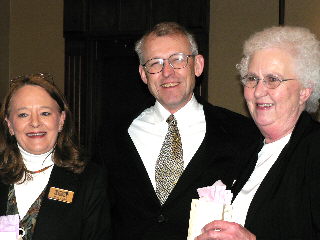
Dede Gatlin, Fred Sarver, Petra Green
Misdee Wrigley Miller then introduced Kim Smith and let audiences hear a brief portion of the audio recordings being made of Saddlebred people as part of the University of Kentucky Oral History Project. This study is scheduled to continue for several years and Misdee Miller will serve as the Saddlebred contact for suggestions of people to be interviewed.
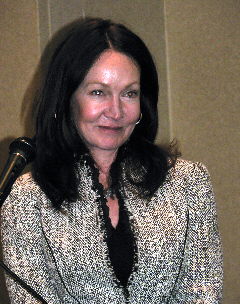 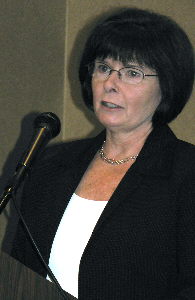
Misdee Wrigley Miller Kim Smith
Dean Scott Smith of the UK College of Agriculture and Dr. Nancy Cox also addressed the audience to explain University of Kentucky’s Equine Initiative, a concerted effort to move UK to the sole position of leader in the equine field.
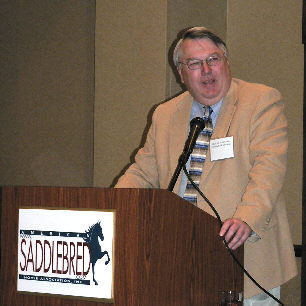
Dean Scott Smith
As part of the many social activities taking place during the weekend, David Freedman invited everyone to his new Midway location for cocktails on Thursday evening. (See separate online coverage) Freedman still manufactures all of his equipment in Canada, but the Midway location will serve as both a retail outlet and as a drop off and pick up point for repairs and new merchandise. With new technology, they can even diagnose repair issues via web cameras from the shop in Canada when you bring in items to Midway for repair. As a part of the grand opening, a work harness was raffled off valued at $2,250.
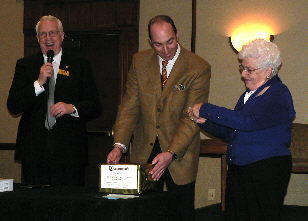
Dottie Raun drew the winning entry
for the Freedman harness as
Alan Balch and David Freedman look on.
On Wednesday evening, prior to the annual meeting, Vicki Gillenwater and Walt Robertson were honored with an engagement party, given by Saddle Horse Report President David L. Howard and Publisher Christy Howard Parsons.
Friday evening, the American Saddlebred Museum played host to the audience with the new exhibit opening “Out of the Shadows: Bringing to Light Black Horsemen in Saddlebred History.” A huge crowd attended the new exhibit and enjoyed cocktails and hors d’oeuvres. (See separate online coverage)
Saturday evening, the American Saddlebred Ball was the finale of the successful weekend held at the Keeneland Entertainment Center. (See separate story)
The youth of ASHA had a full agenda of their own beginning Friday evening with a talent show and concluding with a field trip to local area barns. (See separate story)
The theme of the weekend was Advancement. Alan Balch defined this in the advancement committee on Wednesday evening. Advancement is marketing. But it is much more than marketing. It is pushing forward on all fronts to ensure the future growth and success of the breed.
Art Zubrod said it well. These are not short-term solutions, but a long-term strategy that is being developed over time to address our future needs. Let’s hope we can all pull together to develop a consistent message that can be pushed forward by our nationwide sales force!
2006 ASHA Year End Awards
Distance Riding Division
SHEILA’S NEVADA RED
Open and Pure-Bred Champion – 405.5 miles
Owner: Jonathan R. Shortland
Rider: Sheila Shortland
Combined Driving Division
Preliminary Level
WINDYWAY’S CASSIOPIA
Open and Part-Bred Champion
Owner: Anne Marie Anderson
Pleasure Driving Division
Open Pleasure Driving
WINDWAY’S CASSIOPIA
Open and Part-Bred Champion
Owner: Anne Marie Anderson
Jumper Division
Childrens/Adult Jumper
WINGED FOX AGAIN
Pure-Bred Champion
Owner: Joan Howard
Dressage Division
Training Level
CLICQUOT
Pure-Bred Open Champion, 62.965%
Owner: E. Susan Vine
First Level
REGAL HEIR
Open & Part-Bred Champion, 60.764%
Owner: Kate Fargo
PRATENSE’S REJOICE
Open & Part-Bred Reserve Champion, 60.332%
Owner: Paula Briney
Third Level
ROYAL CREST’S STONE SKIPPER
Open & Pure Bred Champion, 60.000%
Owner: Deborah Hanson
BRIARPATCH FARM’S REBA MCINTYRE
Open and Pure-Bred Reserve Champion, 57.333%
Owner: Patricia Borders
Prix St. Georges
HARRY CALLAHAN
Open and Pure Bred Champion 64.000%
Owner: Linda Cawthon
Sport Horse In Hand
Two Year Old
MIRASSOU PEARL
Open Part-Bred Champion, 20 points
Owner: Rachel Alexander
2006 USDF All Breeds Awards
Open Training - Fourth
Training Level
GOLD CHAMPAGNE’S MARSHALL
Saddlebred Cross, 63.077%
Owner: Terry Rosoff
CLICQUOT
Saddlebred, 62.965%
Owner: E. Susan Vine
First Level
DOUBLETREE’S TEMPEST
Saddlebred, 64.467%
Owner: Kathy Kriner
REGAL HEIR
Saddlebred Cross, 60.764%
Owner: Kate Fargo
PRATENSE’S REJOICE
Saddlebred Cross, 60.332%
Owner: Paula Briney
Third Level
ROYAL CREST’S STONE SKIPPER
Saddlebred, 60.000%
Owner: Deborah Hanson
OPEN FEI
Prix St. Georges
HARRY CALLAHAN
Saddlebred, 64.000%
Owner: Linda Cawthon
AA Training – Fourth
Third Level
DEBORAH HANSON
Riding Royal Crest’s Stone Skipper
Saddlebred, 60.000%
Jr/Yr Training – Fourth
First Level
HANNAH LEWIS
Riding Doubletree’s Tempest
Saddlebred, 64.467%
Owner: Kathy Kriner
KATE FARGO
Riding Regal Heir
Saddlebred Cross, 60.764%
2006 National Pleasure Awards
Three-Gaited Show Pleasure Adult
CH NINETY- EIGHT DEGREES – 40 points
Owner: Nancy Leigh Fisher
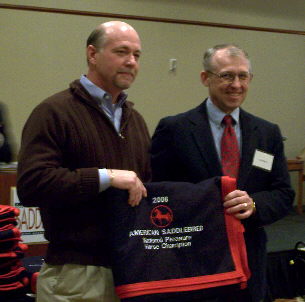
Chuck Herbert receives award from
ASHA President Fred Sarver on behalf of
The Grand Master and Thea Ervin.
Three-Gaited Show Pleasure Junior Exhibitor
CH TITLIST SYMBOL – 28 points
Owner: Sweet Pea Farm LLC
THE GRAND MASTER – 28 points
Owner: Thea Ervin
Western Country Pleasure
WINSDOWN COSMOS – 31 points
Owner: Insanity LLC
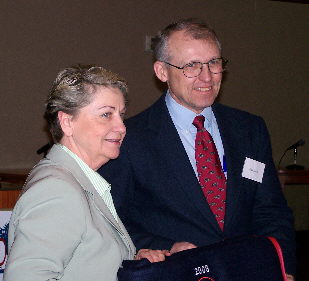
Judy Werner receives award from
ASHA President Fred Sarver.
Five-Gaited Show Pleasure
CH EXECUTIVE DUNK – 32 points
Owner: Judy and Roy Werner
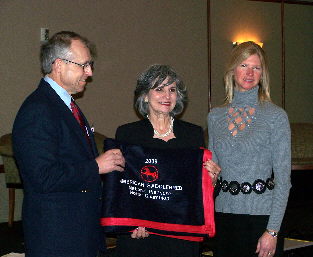
Kathryn Nichols and Lisa Waller receive award
from ASHA President Fred Sarver.
Show Pleasure Driving
CH HEIR’S TOWN – 32 points
Owner: Nancy Leigh Fisher
CANDLE DAN – 32 points
Owner: Carl and Kathryn Nichols
Country Pleasure Driving
CH CALLAWAY’S PRETTY PENNY – 38 points
Owner: Brown-Anderson Farms, Ltd.
Three-Gaited Country Pleasure Junior Exhibitor
PIANO MAN – 28 points
Owner: Lori Jordan
CALLAWAY’S BLUE AGATE – 28 points
Owner: Bruce Burglass, Jr.
Three-Gaited Country Pleasure Adult
CH THE SHADOW KNOWS – 56 points
Owner: Brown-Anderson Farms, Ltd.
Hunter Country Pleasure
KANSAS CITY – 6 points
Owner: Beth and Bill Oliver
|